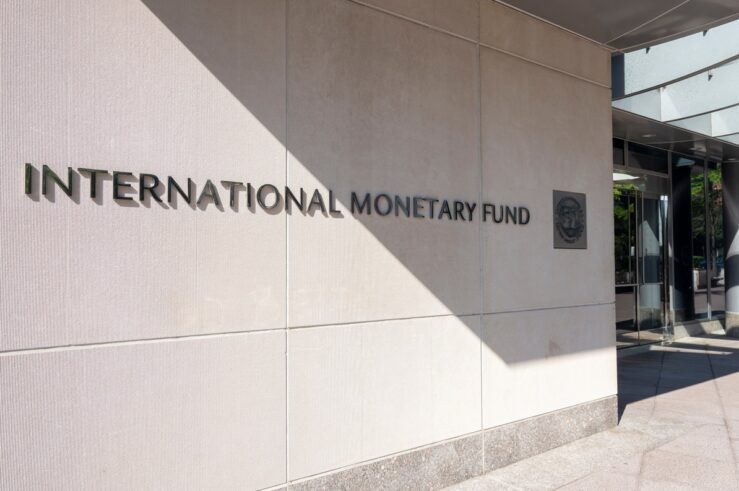Today’s New York Times features an op-ed by Michigan Law Professor Michael Barr and former Clinton advisor Gene Sperling that (somewhat predictably) blames our current financial mess on a lack of “common sense regulation” and exonerates the Community Reinvestment Act, Fannie Mae, and Freddie Mac.
I propose a counter-narrative.
It begins with a nutshell version of the financial crisis, which might look something like this:
The banks won’t lend (except at very high interest rates). That’s because (1) they lack liquidity (since much of their asset base is in mortgage-backed securities that are difficult to value and subject to a lemons problem), (2) this lack of liquidity is creating a limits to arbitrage situation that further prevents banks from selling their troubled assets, and (3) the banks lack trust in many of their counter-parties — other financial firms who also have lots of distressed assets on their books. We got into this sticky situation because the large volume of mortgage defaults has both reduced the value of mortgage-backed securities and rendered them very difficult to value (and thus pretty illiquid). Default rates have risen because housing prices in many areas have fallen abruptly.
At the root of the whole big mess, then, is the bursting of the housing bubble. That raises the question of why the bubble emerged in the first place. In thinking about that issue, I’ve been driven back to my favorite discussion of price bubbles in general — that set forth in Burton Malkiel’s classic book, A Random Walk Down Wall Street.
A price bubble, of course, is a situation in which the price of a type of investment asset far exceeds the underlying value of that type of asset. Throughout history, price bubbles have emerged on all sorts of investment assets. Some notable examples include Internet stocks in the late 1990s/early 2000 (e.g., Amazon’s stock fell from a high of 75.25 in 2000 to low of 5.51 in 2001-02; Yahoo’s, from 238 to 8.45; and Priceline’s, from 165 to 1.05); Japanese real estate in the 1980s (e.g., the appraised value of Tokyo’s imperial palace and grounds in 1990 could have purchased all of California), and tulip bulbs in Holland in the 1600s (e.g., in 1637, the Viceroy tulip bulb reportedly sold for a price in excess of 20 times the annual income a skilled craftsman).
How in the world does this “madness of crowds” happen?
Malkiel suggests that bubbles emerge when a substantial percentage of investors switch from a “firm foundation” approach to valuation to a “greater fool” approach. Under the former approach, the fundamental value of an investment asset amounts to the discounted present value of the cash flows the asset can be expected to generate in the future. (This is the valuation approach that underlies much of modern finance theory.) Under the latter approach, an investment asset’s value equals the amount a “greater fool” will pay to take the asset from the investor. (This is the valuation approach to which John Maynard Keynes referred in his famous beauty contest analogy.) When the investing public becomes enamored with a particular asset class like tech stocks or tulip bulbs, lots of investors — even sophisticated ones — will stop thinking about hard stuff like future cash flows and will focus solely on whether they can profitably re-sell (to greater fools) assets they suspect to be over-valued.
So what should we make of our own recent housing bubble? The discrepancy between rental rates and monthly mortgage payments in many communities suggests that many homeowners were ignoring the firm foundation of value. But that’s to be expected. For most folks (flippers excluded), a home, while obviously an investment asset, is also a consumption good. Many homeowners are really just looking for a comfortable place to live, and they may ignore (or at least minimize) investment considerations.
But what’s really interesting is the degree to which professional investors — banks and other mortgage lenders — were willing to “buy” investment assets (i.e., to make loans, which are really just payments in exchange for IOUs) with precious little regard for the “firm foundation value” of those assets. Why would the banks make so many loans to folks who were unlikely to be able to repay them (sub-prime loans)? And why would they perform so little due diligence before extending credit to many borrowers (Alt-A or “liars’ loans.”)?
Perhaps it’s because they knew there was a greater fool out there. Fannie Mae and Freddie Mac — government sponsored enterprises that enjoy an implicit federal guarantee that allows them to borrow money cheaply — stood ready to buy or guarantee all sorts of crazy mortgages. Indeed, those two entities bought or guaranteed about 70% of new mortgages issued in the first quarter of 2008, and they own or guarantee roughly half of all mortgages in the United States.
Why could banks so reliably count on Fannie and Freddie to buy or guarantee their improvident mortgages? Because Congress, which has given Fannie and Freddie the implicit government guarantee that allows them to borrow money cheaply, encouraged them to purchase or guarantee risky mortgages in order to facilitate affordable housing. As House Financial Services Committee Chairman Barney Frank explained things at a 2003 hearing on GSE reform, “Fannie Mae and Freddie Mac have played a very useful role in helping to make housing more affordable … a mission that this Congress has given them in return for some of the arrangements which are of some benefit to them to focus on affordable housing.” (More from Mr. Frank here. More on this implicit bargain between Congress and the FMs here.)
How shrewd of Congress. It could pursue the laudable goal of affordable housing, without any explicit federal subsidy, by rewarding Fannie and Freddie with a then implicit (now explicit) guarantee that would allow them to dominate their rivals. Looks like a political free lunch.
But there was one problem. In order to appease Congress and thereby maintain their favored status, Fannie and Freddie had to buy up lots of questionable investment assets. That meant that there was a greater fool out there. The existence of that greater fool freed mortgage initiators to disregard the firm foundation approach to valuation and to make all sorts of easily off-loadable subprime and liars’ loans. Voila, a bubble.
Or maybe it was Reagan-era deregulation.




